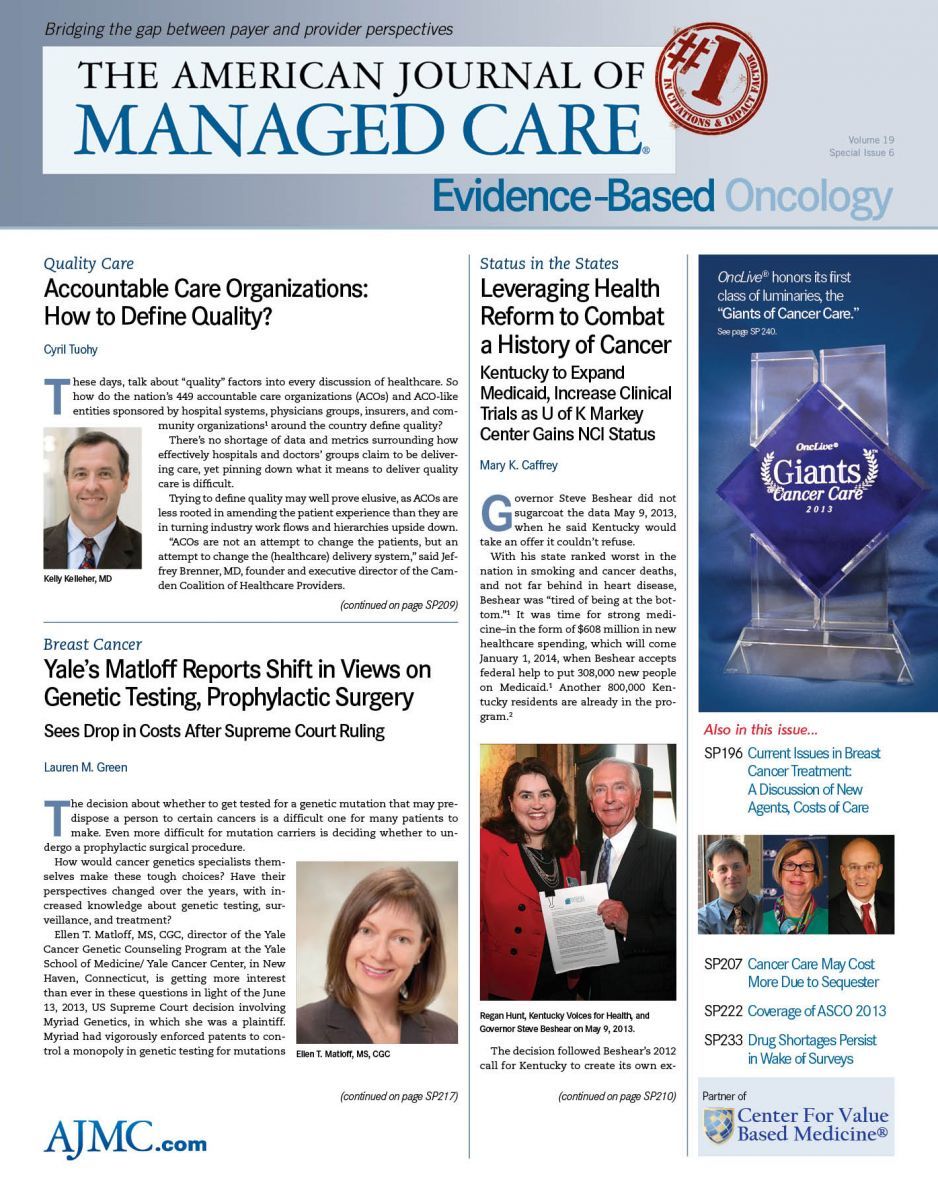Publication
Article
Evidence-Based Oncology
Optimal Paclitaxel Schedule Identified for Early-Stage Breast Cancer
Author(s):
Low-dose weekly paclitaxel is as effective as and has fewer side effects than the standard biweekly schedule for patients with early-stage breast cancer, according to the results of a phase III study presented at the 2013 ASCO Annual Meeting.
Paclitaxel is typically prescribed in either weekly or biweekly regimens. This is the first study to formally compare the 2 dosing schedules. The low-dose weekly administration of the chemotherapy agent paclitaxel resulted in equal disease-free survival (DFS) in patients with early-stage breast cancer when compared with biweekly administration of the drug, and although each dosing regimen resulted in a different set of side effects, the weekly dosing schedule appeared to offer a slightly more favorable side-effect profile.
“It’s important to give these drugs in an optimal way,” said G. Thomas Budd, MD, a medical oncologist at the Cleveland Clinic in Cleveland, Ohio, and lead author of the study. Budd noted that paclitaxel used to be given in higher doses every 3 weeks in the treatment of breast cancer until studies showed that the weekly and biweekly schedules in this study yielded superior results.
In this phase III trial, 3294 patients with node-positive or high risk node-negative operable breast cancer first received treatment with one of 3 different regimens of doxorubicin and cyclophosphamide, after which they were randomized to receive either a low-dose regimen of paclitaxel weekly for 12 weeks or a standard-dose regimen of paclitaxel every 2 weeks for 12 weeks with pegfilgrastim support. As of April 2013, DFS was essentially the same with both schedules of paclitaxel (hazard ratio = 1.05; 95% confidence interval, 0.89-1.25). “It appears from these data that either way of giving paclitaxel produces a similar outcome,” Budd said. “An investigator and a patient or a doctor and a patient could choose either one of these schedules.”
The rate of any grade 3/4 toxicity was similar across the 2 arms, occurring in 36% of patients receiving the biweekly regimen and 35% of patients receiving the weekly regimen. However, researchers found that the different dosing schedules were characterized by different types of side effects of different severities. Allergic reactions were more common in the biweekly dose (14%) compared with the lower dose (6%), as were symptoms of bone and muscle pain (11% vs 3%, respectively). Neurologic toxicity was also more frequent in the biweekly dose of paclitaxel compared with the low-dose regimen (17% vs 10%, respectively), but Budd noted that patients received 6 cycles of the biweekly regimen instead of the standard four cycles for the purposes of scientific comparison, which may have slightly affected the frequency of these side effects.
The rate of hematologic toxicity was higher in the weekly dose arm (17%) than the biweekly dose arm (6%), as was the rate of leukopenia (6% vs 1%, respectively) and neutrophils (11% vs 2%, respectively). However, the rate of neutropenic fever was low in both groups (0.4% vs 0.1%, respectively) and the difference was not statistically significant (P = .29). Budd explained that the higher rates of hematologic toxicity in the weekly schedule could have been a result of ascertainment bias, since patients had toxicities measured on a weekly basis rather than the biweekly basis of the other study arm. “In this study, the weekly schedule seemed to be less toxic for most patients,” Budd said.
1. Budd GT, Barlow WE, Moore HCF, et al. S0221: comparison of two schedules of paclitaxel as adjuvant therapy for breast cancer. J Clin Oncol. 2013;31(suppl; abstr CRA1008).







